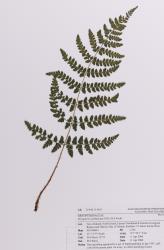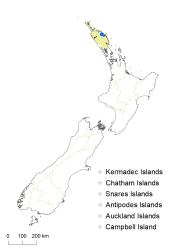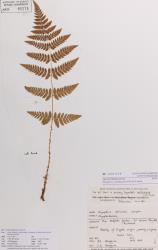- ≡ Polypodium carthusiana Vill., Hist. Pl. Dauphiné 1, 292 (1786)
Dryopteris carthusiana has a prostrate rhizome and an ovate to narrowly ovate lamina, which is 2-pinnate-pinnatifid to 3-pinnate. The scales on the abaxial costa surfaces are flat, and the sori are arranged in one row either side of the costa, protected by reniform indusia. The species is very similar to D. dilatata but differs in having a more erect habit, a prostrate rather than erect rhizome, paler rhizome scales lacking a dark central area, and a paler and narrower lamina. The lamina is flat rather than having slightly down-turned margins (Page 1982; Hoshizaki & Moran 2001).
North Island: Northland.
Altitudinal range: c. 10 m.
Dryopteris carthusiana has been recorded as spreading from cultivated plants in a garden in Kerikeri.
It occurs naturally in eastern North America, Europe and Asia (Smith 1993).
Recorded as self-sown in a pot near a cultivated parent plant.
Heenan et al. (2008). Voucher AK 296560 (incorrectly cited as AK 299450), 2006.
No chromosome count has been reported for New Zealand plants. In Europe the plant is known to be an allotetraploid sexual species derived from D. intermedia and an unknown diploid species (Fraser-Jenkins 1980).






